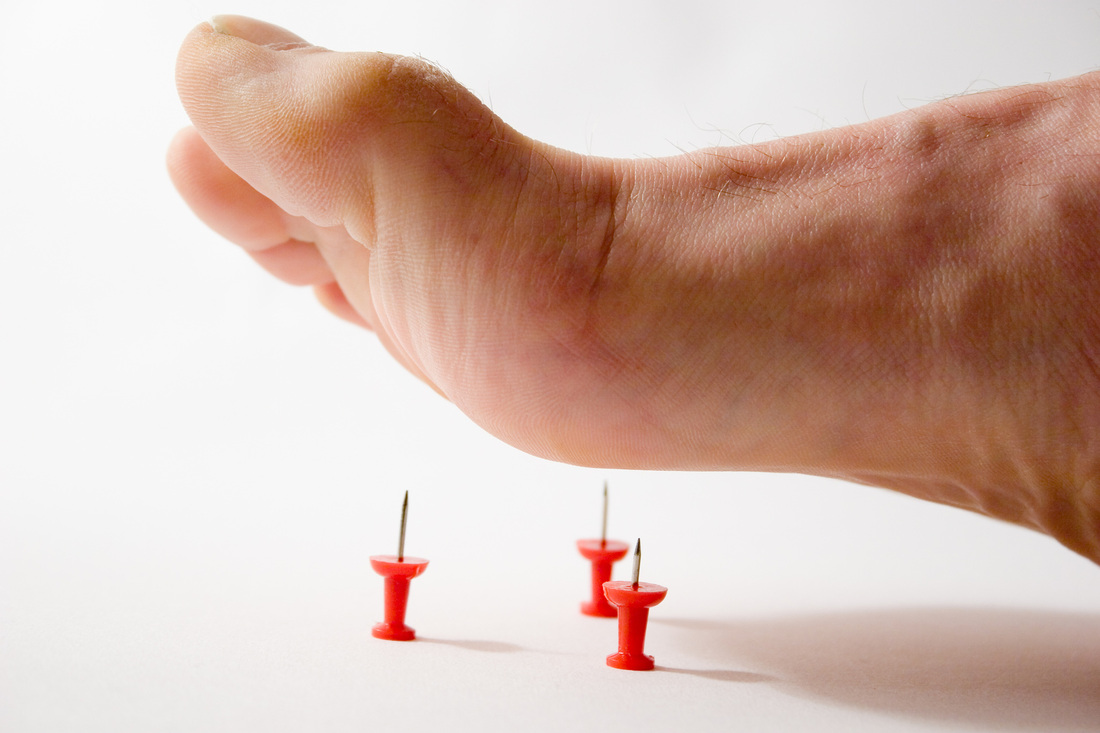According to a recent national survey by the American Diabetes Association (ADA), the majority of people with diabetes have symptoms of diabetic neuropathy (nerve damage). But, only a small minority has been diagnosed with this condition. Diabetic neuropathy is a complication of diabetes that leads to sensations of pain and/or numbness, tingling or “pins and needles” in the feet and hands. According to study findings, a staggering 56 percent of people with diabetes have never even heard of the condition.
This lack of awareness is unfortunate for the 18.2 million people in the United States living with diabetes. The symptoms can make it hard to function, and because the pain of diabetic neuropathy usually is worse at night, many have difficulty sleeping. The nerve damage can make a person extremely sensitive to even the lightest touch, and simply wearing socks or having a foot touch a bed sheet can cause pain. People with this condition may have difficulty walking, working or socializing. And diabetic neuropathy is a major risk factor for foot injury, infection and amputation. Left untreated, diabetic neuropathy always progresses.
FORTUNATELY, THERE IS GOOD NEWS
With attention, management and treatment, diabetic neuropathy can be prevented or delayed. Awareness is the first, critical step in taking care of yourself and preventing serious problems in the future.
That’s why the ADA has embarked on an awareness campaign to educate people with diabetes about diabetic neuropathy. The campaign focuses on the seriousness of this complication, recognizing the symptoms and most important, the things people can do to prevent, reduce or manage these symptoms. There is a patient “pocket checklist” so that you can review a list of symptoms. If any of these symptoms apply to you, take this list to your health care provider; ask if you have neuropathy and what you can do about it. For more information or to get your free copy of All About Nerve Damage & Diabetes, call the ADA at 1-800-DIABETES (1-800-342-2383), or visit http://www.diabetes.org/living-with-diabetes/complications/neuropathy/.
COULD YOU HAVE DIABETIC NEUROPATHY AND NOT KNOW IT?
The most common type of nerve damage in people who have diabetes is called peripheral neuropathy, which affects the feet and hands. Reporting symptoms to your health care provider can help prevent future complications, such as amputations. Take this list to your next office visit. Symptoms Place a check mark next to any symptom you have:
Talk with your health care provider about treatments available to relieve pain and reduce burning, tingling and numbness.
This lack of awareness is unfortunate for the 18.2 million people in the United States living with diabetes. The symptoms can make it hard to function, and because the pain of diabetic neuropathy usually is worse at night, many have difficulty sleeping. The nerve damage can make a person extremely sensitive to even the lightest touch, and simply wearing socks or having a foot touch a bed sheet can cause pain. People with this condition may have difficulty walking, working or socializing. And diabetic neuropathy is a major risk factor for foot injury, infection and amputation. Left untreated, diabetic neuropathy always progresses.
FORTUNATELY, THERE IS GOOD NEWS
With attention, management and treatment, diabetic neuropathy can be prevented or delayed. Awareness is the first, critical step in taking care of yourself and preventing serious problems in the future.
That’s why the ADA has embarked on an awareness campaign to educate people with diabetes about diabetic neuropathy. The campaign focuses on the seriousness of this complication, recognizing the symptoms and most important, the things people can do to prevent, reduce or manage these symptoms. There is a patient “pocket checklist” so that you can review a list of symptoms. If any of these symptoms apply to you, take this list to your health care provider; ask if you have neuropathy and what you can do about it. For more information or to get your free copy of All About Nerve Damage & Diabetes, call the ADA at 1-800-DIABETES (1-800-342-2383), or visit http://www.diabetes.org/living-with-diabetes/complications/neuropathy/.
COULD YOU HAVE DIABETIC NEUROPATHY AND NOT KNOW IT?
The most common type of nerve damage in people who have diabetes is called peripheral neuropathy, which affects the feet and hands. Reporting symptoms to your health care provider can help prevent future complications, such as amputations. Take this list to your next office visit. Symptoms Place a check mark next to any symptom you have:
- My feet tingle.
- I feel “pins and needles” in my feet.
- I have burning, stabbing or shooting pains in my feet.
- My feet are very sensitive to touch. For example, sometimes it hurts to have the bed covers touch my feet.
- My feet hurt at night.
- My feet and hands get very cold or very hot.
- My feet are numb and feel dead.
- I don’t feel pain in my feet, even when I have blisters or injuries.
- I can’t feel my feet when I’m walking.
- The muscles in my feet and legs are weak.
- I ’m unsteady when I stand or walk.
- I have trouble feeling heat or cold in my feet or hands.
- I have open sores (also called ulcers) on my feet and legs. These sores heal very slowly.
- It seems like the muscles and bones in my feet have changed shape.
- Other symptoms I have include: ____________________________
Talk with your health care provider about treatments available to relieve pain and reduce burning, tingling and numbness.




 RSS Feed
RSS Feed
